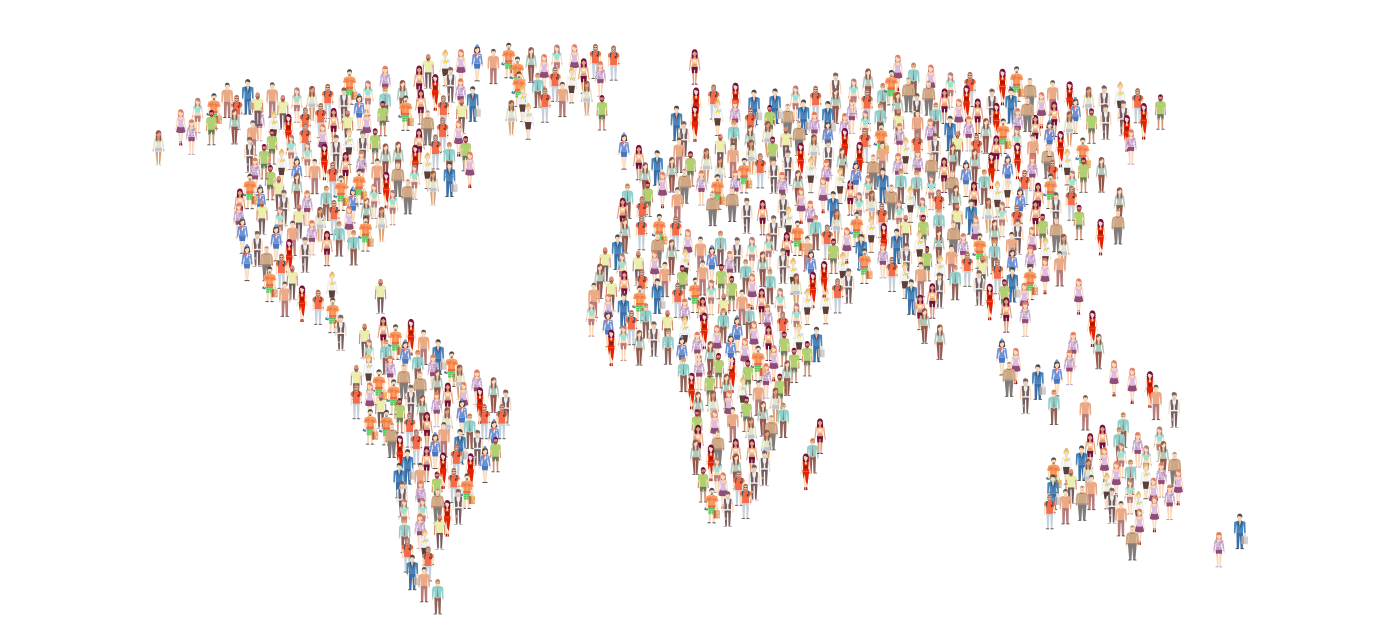What factors affect population density and distribution?
Population distribution is a term used to describe how humans are spread across the Earth. Population distribution across the Earth is uneven. Some areas are densely populated, whereas others are sparsely populated.
The land surface of the Earth accounts for around 30% of its area. However, only around 11% of the land surface can be comfortably inhabited by humans. Many human and physical factors affect population distribution and population density across the world.
Physical factors that affect population density include water supply, climate, relief (shape of the land), vegetation, soils and availability of natural resources and energy.
Human factors that affect population density include social, political and economic factors.
| Factors | Sparsely populated | Densely Populated |
|---|---|---|
| Physical factors | Mountainous areas make it difficult to construct buildings and roads. They are often inaccessible and remote. Areas with extreme climates such as hot and cold deserts make it difficult to grow crops and access water. Regions with dense vegetation cover, such as rainforests, provide challenges in terms of access and the lack of services make human inhabitation very difficult. Flood plains present the risk of flooding, so building on them is often prohibited. A lack of natural resources in an area presents significant challenges to economic development. If land is infertile humans are unable to grow food leading to a low population density. Locations that regularly experience natural hazards can discourage people from settling in the area. | Coastal environments and those with rivers provide good access and allow trading to occur, encouraging the growth of economic activities. Locations with favourable climates tend to be more densely populated as food can be produced, and it provides a more comfortable environment to live in. Regions where the relief is flat are easier to build on and develop. The availability of natural resources encourages a higher population density as these can be processed and used in industry and manufacturing. Regions that experience no or few natural disasters are more likely to have a lower population density as they are safer. Fertile land attracts a higher population density as food can be produced. A reliable water supply encourages a high population density as water can be used for drinking, washing, transportation and irrigation. |
| Economic factors | Regions with little or no economic opportunities tend to be sparsely populated as people are unable to secure a regular income. Locations with little or no infrastructure, including transport, energy, water and sanitation do not attract significant numbers of people. Poor transport infrastructure provides considerable challenges, especially with regards accessibility leading to a low population density. | The availability of jobs and economic activities within a region leads to an increase in population density. Locations with an effective infrastructure, including transport, energy, water, and sanitation are usually densely populated. A good transport infrastructure attracts a high population density as people can travel and commute easily. It also allows the free movement of goods which leads to the development of industry, providing jobs to people in the local area. |
| Social factors | High levels of crime discourage people from settling in an area, leading to a low population density. | Low crime rates can encourage people to move to an area, leading to a high population density. |
| Political factors | Poor public services, including education and health care, discourage people from living in an area, leading to a low population density. Civil war and persecution can lead to a low population density as people move to escape violence. Governmental corruption can also lead to a low population density. | Effective public services, including education and health care, attract people leading to a higher population density. A safe, reliable Government can encourage people to a country, leading to an increased population density. |
Related Topics
Use the images below to explore related GeoTopics.



